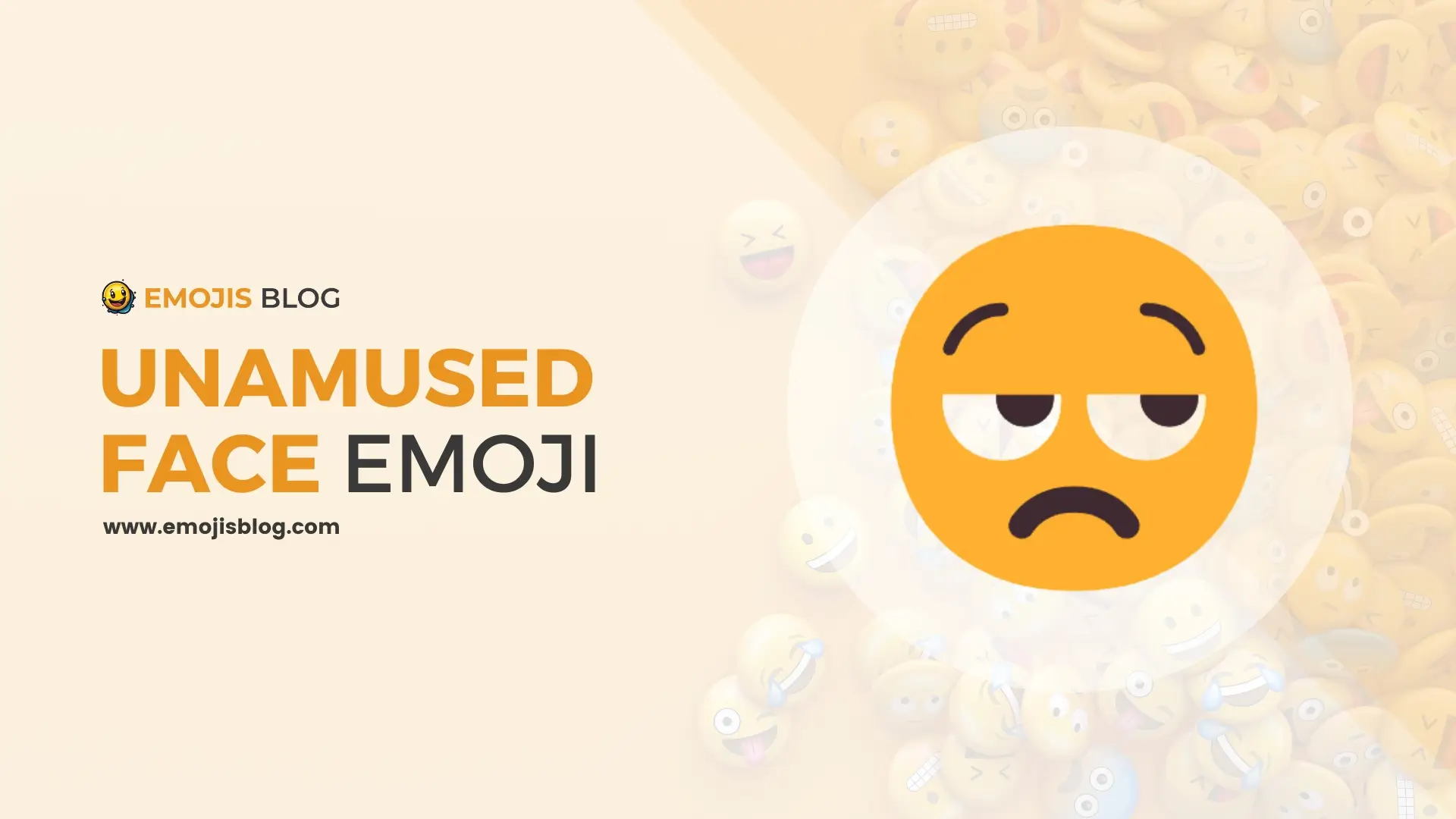What Does This Emoji Mean 😒
😒
What Does This Emoji Mean 😒
The emoji 😒, commonly known as the unamused face, expresses a range of negative emotions, primarily signalling annoyance, dissatisfaction, or scepticism. Its design features slightly furrowed eyebrows and a straight, closed mouth, conveying a sense of disapproval or irritation. While its meaning can vary based on context and cultural interpretation, it is generally used to indicate that the sender is not impressed, amused, or happy with the current situation or the topic at hand. This emoji effectively adds emotional depth to digital communication, allowing users to express subtle feelings of displeasure that might be difficult to convey through text alone.
Technical Information
| Attribute | Details |
|---|---|
| Emoji | 😒 |
| Description | Unamused Face |
| Unicode Version | Unicode 6.0 (2010) |
| Unicode Code Point(s) | U+1F612 |
| HTML Entity | 😒 |
| Shortcode(s) | :unamused: (common in platforms like Slack, GitHub) |
| Category | Smileys & Emotion |
| Subcategory | Face Neutral-Skeptical |
| Introduced in Emoji | Version 1.0 |
| Platforms Supported | iOS, Android, Windows, macOS, and most web platforms |
| Keywords | Unamused, displeased, skeptical, annoyed, face |
Understanding the 😒 Emoji: A Comprehensive Guide
In the digital age, emojis have become a universal language, transcending cultural and linguistic barriers. Among these,
the 😒 emoji, often referred to as the “unamused face” or “displeased face,” has gained significant popularity. This article delves into the meaning, usage, and cultural significance of the 😒 emoji, offering a comprehensive understanding of this expressive icon.
The Origin and Design of the 😒 Emoji
Historical Background
The 😒 emoji first appeared in emoji sets around the early 2010s. It was part of the initial emoji release by Unicode, an organization that standardizes text and characters across different platforms. This inclusion marked the beginning of the emoji’s journey into digital communication.
Visual Interpretation
Visually, the 😒 emoji features a face with a straight, closed mouth and slightly furrowed eyebrows, often interpreted as a look of dissatisfaction or annoyance. The design is intentionally simplistic, allowing for a wide range of interpretations based on context.
The Meaning and Usage of the 😒 Emoji
Common Interpretations
The primary interpretation of the 😒 emoji is a sense of displeasure, annoyance, or skepticism. It’s often used to convey feelings of dissatisfaction or to subtly express disagreement or disapproval in a conversation.
Contextual Variability
The meaning of the 😒 emoji can vary greatly depending on the context. In some cases, it might be used humorously or sarcastically, while in other situations, it can convey genuine frustration or disapproval.
Cultural Differences
It’s important to note that the interpretation of emojis can differ across cultures. What might be seen as a sign of annoyance in one culture could have a different connotation in another. This highlights the importance of understanding the cultural context when interpreting emojis.
The 😒 Emoji in Digital Communication
Usage in Text Messaging and Social Media
The 😒 emoji is widely used in text messaging, social media platforms, and emails. It’s often employed to add emotional nuance to a message, something that plain text lacks.
Impact on Digital Etiquette
The use of the 😒 emoji also brings up questions of digital etiquette. Its use in professional contexts, for example, might be considered inappropriate or too casual. Understanding the right context for using such emojis is key to effective digital communication.
Conclusion
The 😒 emoji serves as a powerful tool in the realm of digital communication, allowing users to express a range of emotions, from mild annoyance to outright displeasure. As with any form of communication, the context and cultural background play a crucial role in interpreting its meaning accurately. Emojis like 😒 have transformed the way we convey emotions in the digital age, making our interactions more expressive and nuanced.

